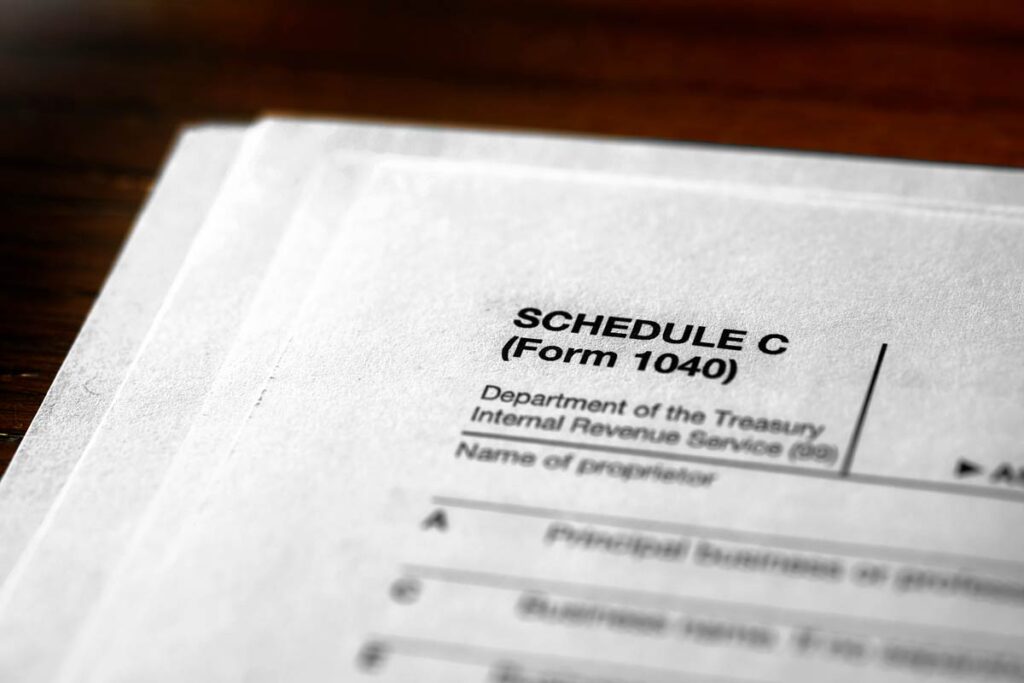On Wednesday, March 3rd, the SBA and Treasury released a new Interim Final Ruling (IFR) that details previous guidance announced by the Biden administration related to Schedule C filers and the calculation of their maximum PPP2 first draw or second draw loan. The new guidance allows Schedule C filers to use either gross income or net profit when calculating an amount for owner compensation replacement, in addition to payroll costs for employees. New Borrower Application Forms are now available for Schedule C filers applying for a PPP2 first draw (Form 2483-C) or second draw (Form 2483-SD-C) loan.
Gross income is the amount the borrower reports on line 7 of Schedule C. If there are no employees, the borrower may elect to calculate its loan amount based on either net profit or gross income. If there are employees, the borrower may elect to calculate the owner compensation replacement based on either Schedule C net profit or Schedule C gross income (line 7) less employee benefit program expense (line 14), pension and profit-sharing plans expense (line 19), and wages expense less employment credits (line 26). The owner compensation replacement ‘payroll costs’ are now referred to as ‘proprietor expenses.’
Potential borrowers may use either 2019 or 2020 Schedule C gross income or net profit to apply for a PPP2 first or second draw loan. If a 2020 return has not yet been filed, a borrower may still use 2020 but must be sure that the amount filed on the return matches what was used to apply for the loan. If the Schedule C filer does not have any employees and net profit or gross income exceeds $100,000, the amount must be reduced to $100,000 to calculate the maximum loan. The maximum amount of proprietor expenses that may be requested as part of the PPP loan is $20,833. If both net profit and gross income are zero or less, the business is not eligible for a PPP loan.
Required documentation that must be submitted with your PPP loan application include:
- IRS Form 1040, Schedule C for 2019 or 2020 – if you have not yet filed your 2020 return, you must fill out a Schedule C that will match what you intend to file.
- IRS Forms 1099-MISC detailing nonemployee compensation received.
- Invoices, bank statements, or the book of record that establishes that you are self-employed.
If there are employees:
- Form 941 and state quarterly wage unemployment insurance tax reporting forms for each quarter in the year that you are using to apply for a loan or the equivalent payroll processor records.
- Evidence of retirement and health insurance contributions, if applicable.
- Payroll statement or similar documentation from the pay period covering February 15, 2020 to establish you were in operation at that time.
If the Schedule C filer applying for a loan falls under business NAICS code starting with 72 (food and accommodation services), the amount of the PPP loan is 3.5 times the average monthly payroll costs plus proprietor expenses. If this applies, the maximum requested proprietor expenses cannot exceed $29,167.
If a borrower reported more than $150,000 in gross income on their Schedule C and opts to use gross income to calculate the maximum PPP loan request, the loan necessity safe harbor will no longer apply and the automatic certification concerning loan necessity made in good faith will not be met and the borrower may be subject to a review by SBA of this certification.
The new rule impacts only those borrowers that have not yet been approved for a PPP2 first or second draw loan. The new calculation is not retroactive and therefore will not allow Schedule C filers you have already been approved for a PPP2 first or second draw loan to increase the amount of loan they have already received.


